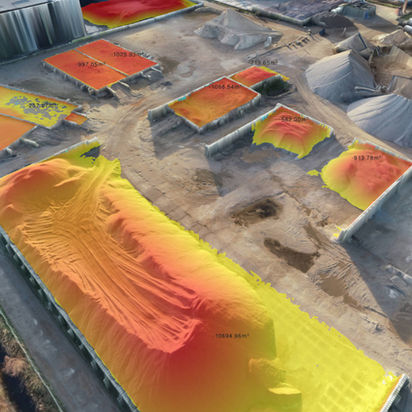

Aerovant is a company that specializes in providing industrial drone services using unmanned aerial vehicles (UAVs). These UAVs are equipped with a variety of cameras and sensors that allow for a range of services to be performed. During my time at Aerovant, I was a part of a team responsible for utilizing LIDAR sensors in the inspection of powerlines for potential hazards.
Working at Aerovant has been a truly transformative experience for me, as it has given me a firsthand look at the incredible capabilities of drones in today's world and the rapid pace at which drone technology is advancing. I have come to appreciate the many ways in which drones are being used to improve various industries, including agriculture, construction, and logistics, as well as the many benefits they offer, such as increased efficiency, cost savings, and improved safety. The cutting-edge technology and innovative approaches used by the team at Aerovant have truly opened my eyes to the limitless potential of drones and the exciting future they hold.

I am only able to share projects that have been approved for public sharing due to confidentiality agreements.
Inspecting Powerlines Overview
LiDAR (Light Detection and Ranging) is a sensor technology that uses laser beams to measure the distance to an object or surface. A LiDAR camera on an industrial drone can be used to inspect for vegetation encroachment and other hazards on powerlines by creating a 3D map of the area.
The LiDAR camera emits laser beams and records the time it takes for them to bounce back, allowing the drone to create a detailed and accurate 3D map of the powerline and surrounding area. This map can then be analyzed using LIDAR360 to measure sag and identify trees or bushes that may be growing too close to the powerlines.
For example, if a tree is growing too close to a powerline, the drone can identify the exact location and height of the tree, allowing workers to safely remove it before it causes any damage.

Clearance Detection

Power lines, by law, are required to maintain a certain distance from surrounding objects such as trees, buildings, and roads to ensure the safety of the public and the power line infrastructure itself. This distance is known as the "clearance distance" and it varies depending on the type of object.
Measuring Sag


Sag is a term used in the power industry to describe the downward deflection of an overhead power line caused by the weight of the wire and the tension in the line. The sag of a power line is an important factor to consider in the maintenance of power transmission and distribution systems, as it can affect the efficiency and safety of the system.
Tree Fall Detection


Heat anomalies in solar panels

RGB Camera

Thermal Camera
(visible hot spots)
Other Interesting Projects
Volumetric Analysis
Topography
Runoff analysis






